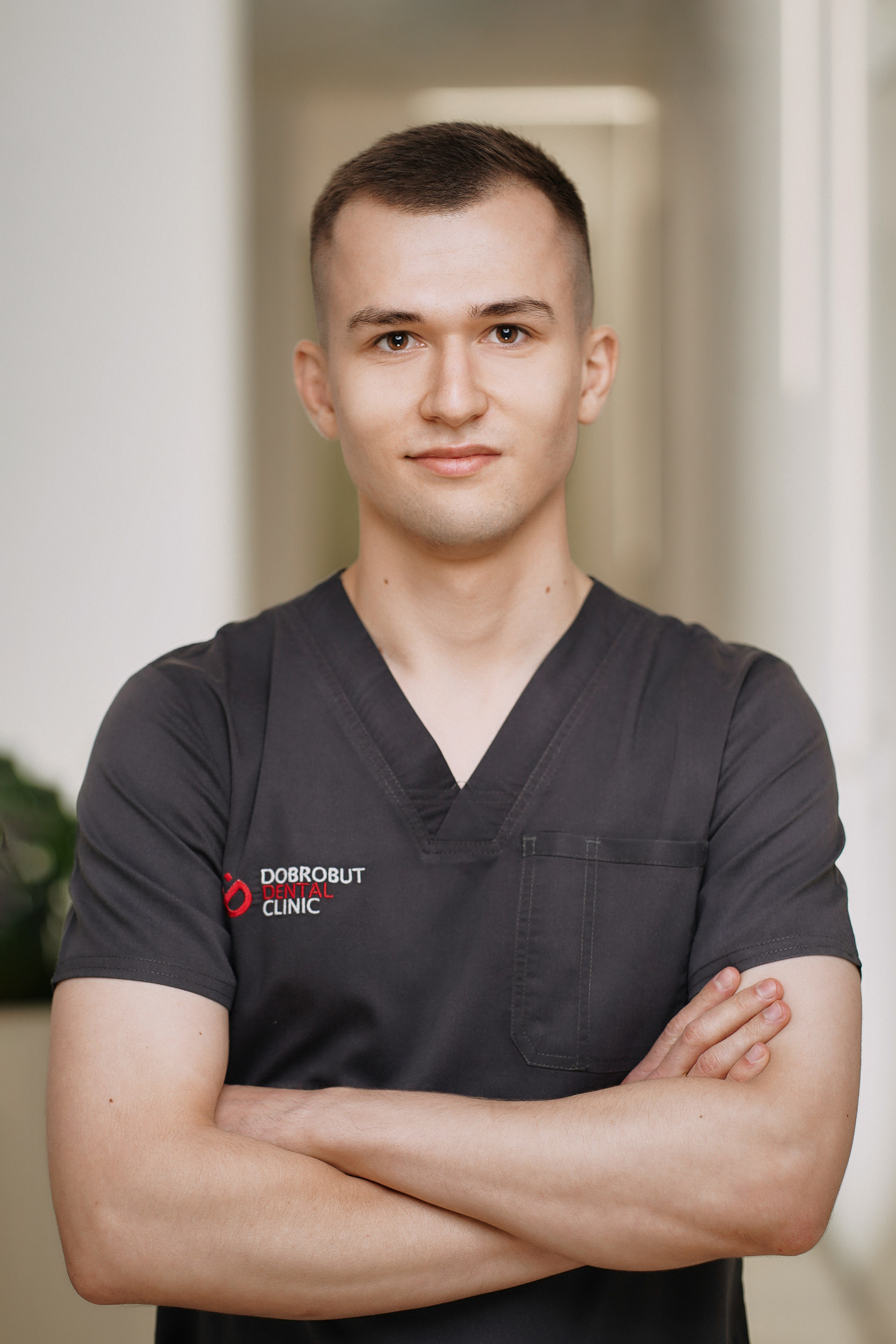Our clinics
DDC dentistry in Obolon
16-V Volodymyra Ivasiuka Ave (Heroiv Stalingrada), Kyiv, Mon-Sun: 9:00-19:00
DDC dentistry in Pechersk
14-16 Mykoly Mikhnovskoho Blvd (Druzhby Narodiv), Kyiv, Mon-Sun: 9:00-19:00
DDC dentistry in Poznyaki
12-A Mykoly Bazhana Ave, Kyiv, Mon-Sun: 9:00-19:00
DDC Dentistry on Olimpiyska
40 Antonovycha St, Kyiv, Mon-Sun: 9:00-19:00
Gnathology
In the human body, all systems are interconnected, so when treating any disease, a comprehensive and multidisciplinary approach must be considered. It is important not only to eliminate symptoms but also to identify and correct their root cause. This is precisely the focus of a gnathologist. They analyze the functioning of all components of the dental and jaw system and investigate how a disruption in one mechanism affects other structures, taking into account the individual anatomical features of each patient.
Consultation with a Gnathologist
During the consultation, the doctor checks the state of the temporomandibular joints, the bite, the tone of the masticatory muscles, neck and shoulder muscles, as well as the condition of the spine. Imbalances in the dental and jaw system can lead to various complications such as bruxism, limited jaw movement, clicking or pain in the joints, headaches, tooth enamel wear, bite disorders, and other issues. The primary task is to identify the cause of these disturbances in order to restore muscle balance and the full functioning of the dental and jaw system through appropriate treatment. During the treatment, many patients notice the disappearance of pain symptoms, spasms of the facial muscles, and other unpleasant manifestations of temporomandibular joint dysfunction.
Diagnosis During a Visit to the Gnathologist
During the initial consultation, the following procedures are performed:
- Collection of the disease history;
- Extraoral examination:
- evaluation of facial symmetry, range of motion of the lower jaw when opening the mouth;
- palpation of the masticatory muscles;
- Intraoral examination:
- evaluation of the bite;
- edentulousness;
- signs of bruxism;
- tooth wear;
- identification of other factors that may affect the condition and function of the temporomandibular joint.
Referral for consultations with related specialists (if necessary):
- Consultation with an otoneurologist
- Consultation with a rheumatologist
- Consultation with a neurologist
- Consultation with a maxillofacial surgeon
Additional diagnostic methods:
- CT scan of the facial skeleton
- MRI of the temporomandibular joint with open/closed mouth
- Photodiagnostics
- Axography
- Myography
Treatment of patients with temporomandibular joint dysfunction requires a comprehensive approach.
To normalize the position of the lower jaw and the tone of the masticatory muscles, joint splints are usually used. They help relax the masticatory muscles and allow gradual adaptation to the therapeutic position of the lower jaw. The duration of joint therapy can range from 3 to 12 months. After completing the gnathological phase, the patient typically continues treatment with an orthodontist or a prosthodontist. In each individual case, the doctor creates a personalized treatment plan according to the patient's needs.
Service prices
- Analysis of diagnostic models in articulator3100 грн
- Determination of the central ratio of the jaws1560 грн
- Registration of the position of the upper jaw using the facial arc1050 грн
- Fixation of the central ratio of the jaws1030 грн
- Introoral scan (one jaw)1450 грн
- Primary digital diagnosis of occlusion T-scan3730 грн
- Repeated digital diagnosis of occlusion T-scan3080 грн
- Masticatory muscle deprogramming2980 грн
- Splint therapy51000 грн
- Digital modeling (1 tooth)2250 грн
- CBCT of the temporomandibular joint (without description)1280 грн
- Lateral teleroentgenogram (without description)670 грн
- Frontal Teleradiography670 грн
- Temporomandibular Joint Splint (Single Jaw)19500 грн
- Sanding mouthguard460 грн
- Making a removable retainer/deprogrammer (1 jaw)2780 грн
- Preparation of control and diagnostic models970 грн
- Control and diagnostic models (CDM) laboratory manufacturing method1350 грн
- Printing 3D models1530 грн
Make an appointment
Doctors
Make an appointment
Fill out the form below and we will call you back in the near future!








